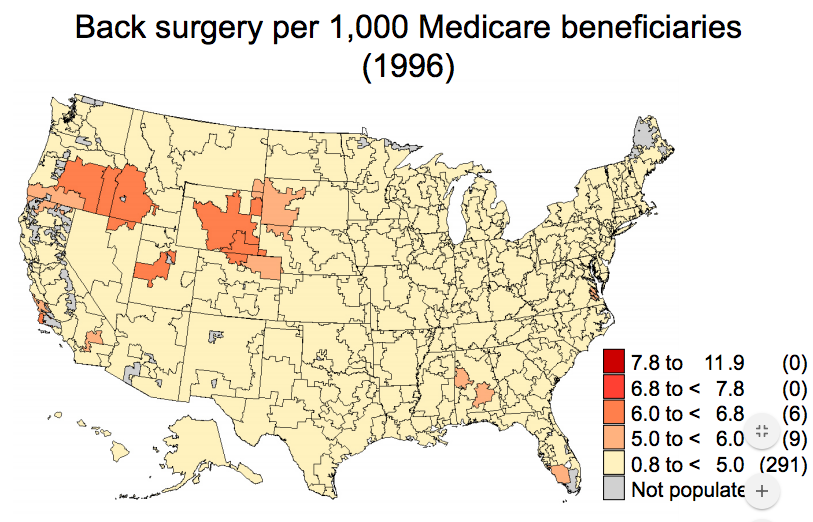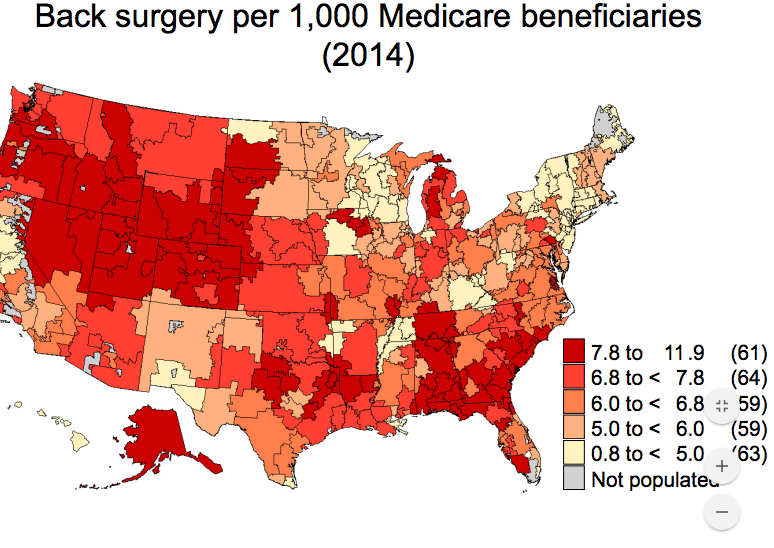Geek alert!
For work comp wonks, in this post I’m reporting on what transpired at this morning’s meeting at DOL on Work comp; a summary and perspective will be the subject of a post tomorrow.
OSHA’s Director led off this morning’s presentation at the Department of Labor with a quick summary of the history of work comp, noting the death rate for WC declined from 37 per day to 12 per day over the last 40+ years despite a doubling of the number of people employed.
(note the statements below are paraphrased, some may not be entirely accurate due to lack of transcript available at the time of posting)
The written report is here for download.
He also stated many injuries are NOT reported, saying workers’ comp is the ONLY element of the social net without federal oversight.
Key paraphrased quotes:
- Costs are shifted away from employers, and to workers, their families, and other social insurance programs.
- The race to the bottom for workers comp among states has continued.
- Potential policy initiatives are here.
NASI CEO Bill Arnone’s comments included:
- workers’ compensation is a social insurance system that “needs work”
- today’s work place is very different from 1908…
- 3 million injuries and illnesses reported in 2014 – 1/3 represented time away from work
- lack of uniform reporting of state experience
- goal of workers comp- adequate wage replacement and medical care at reasonable cost – balance adequacy and affordability
Social Security’s Commissioner Carolyn Colvin was up next; notable statements follow:
- 9 million disabled workers receive income from Social Security – plus 2 million of their dependents; averaging under $1,200 per month
- for 1/3 of these workers, SS Disability Income (DI) income is their ONLY income.
- if the full cost of workers injuries aren’t covered by workers comp, someone else is paying for those costs
- recent changes in some states’ work comp laws may be shifting costs to SS DI and Medicare
The Commissioner was quite clear that Social Security is very interested in worker disability as shifting of expense to SS DI increases Social Security’s ultimate cost.
Secretary of Labor Tom Perez then took the podium. Perez gave a detailed and passionate review of the formative years of workers’ compensation. The Secretary noted that today, just as 80 years ago, state workers’ comp systems vary widely, AND, the Feds have “leverage” at the federal level for other social insurance programs including unemployment insurance.
Perez linked today’s work comp systems with those that led to the National Commission in the last century, starting with Texas opt-out as problematic due to low benefits. The Secretary also said:
- you’ve got to win the geographic lottery to be taken care of due to differences among states
- taxpayers are unfairly subsidizing a workers’ comp system that is not doing enough
- DOL doesn’t have statutory authority to protect workers but we do have the bully pulpit.
A panel discussion began; speakers included John Burton, PhD, Professor Emeritus at Rutgers and former Chair of the Commission; Gary Franklin MD, Medical Director of Washington’s State WC Fund L&I; Christopher McLaren PhD of NASI, Emily Spieler, Professor and Labor Attorney, former Commissioner of WC in West Virginia.
Burton was asked for his views…at which time the broadcast went down for a few minutes. When we were reconnected, Burton provided a background of the Commission’s work, suggesting the standards represented a “floor” for benefits and other aspects of workers comp, and the decline in benefits was largely driven by state’s unfounded fear that employers would leave for more friendly locales.
Burton does not believe there is any chance federal standards will be enacted over the next 20 years, and can’t be developed because the world has changed so much. Burton believes there is a “race to the bottom” once again, and this has resulted in states reducing benefits.
In a later segment, Burton noted there is a discrepancy between the NASI data and the Bureau of Labor Statistics’ data on employers’ workers’ comp costs; BLS data indicates employer costs are not going up, in contrast to NASI’s findings.
He also panned the AMA Disability Rating Guidelines, claiming among other things that they are completely non-evidence based, and suggesting the Institute of Medicine come up with a disability rating guide…I wholeheartedly disagree w Burton’s assertions about and denigration of the Guides.
Dr McLaren hit the highlights of the new NASI work comp report – copy here. Later, he noted that costs are going up now due in large part to the ongoing recovery from the Great Recession; costs tend to go up before the benefits paid catches up to the new workers’ new injuries.
Dr Spieler was asked to identify the key problems in state workers’ comp systems. She agreed with John Burton that a major problem is states seeking to compete with other states, and:
- many injured workers don’t apply for benefits and therefore don’t appear in NASI or other reports
- some apply for benefits but don’t get them due to payer contesting the claim due to requirement that workplace was major contributing cause to the impairment.
- are cash benefits adequate – there have been cutbacks in length of time patients can receive benefits, citing Oklahoma
- patients exist in a “Kafka-esque” system, alarmingly complex and stigmatizing.
- there’ve been statutory efforts to “cut back” on medical benefits
- the goal of replacing 2/3 of pre-injury wages was and should remain a goal.
- Oklahoma opt-out was mentioned multiple times
Gary Franklin MD PhD spoke about medical care in the system (note – Gary is a friend and colleague)
Gary noted that unlike some states, Washington is in a race to the top. He also said many payers don’t even have senior medical staff to help guide policy. For those who know Dr Franklin, it will come as no surprise that he used the term “evidence-based” multiple times in referring to formularies, lumbar fusion and other surgery, and disability.
A lot of the contribution to long term disability is due to baad medical care; workers’ comp medical care is among the worst medical care in the country, Gary cited 32 deaths of workers comp patients who had low back sprains, got opioids, and were dying due to their prescriptions. WA focuses on preventing disability three ways:
- develop validated methods, tools, and instruments that docs can use to identify patients at risk for extended disability
- using evidence based methods to develop treatment guidelines to prevent them from being injured
- develop delivery systems to reorganize care to allow better care for injured workers, the Centers for Occupational health and Education – 50% of patients are going thru these Centers, which have helped reduce preventable disability by over a third.
Net – paying much more attention to technology assessments, evidence-based clinical guidelines, and preventable disability are all helping workers avoid bad care and prevent extended disability. Gary talked about the horrible effects of lumbar fusion surgery and opioids – “a huge percentage of injured workers that are now on SSDI are on opioids, and that started in the workers comp system.”
The discussion went on from there, with a discussion of illnesses and how the system doesn’t adequately address occupational injuries, DOL’s views on work comp and the Gig economy, and the need for more research on occ injuries and illnesses sustained by Gig economy workers.
The issue of misclassification, and how states handle independent contractors, problems in the construction industry with labor cheating was raised by Burton – valid points all.






